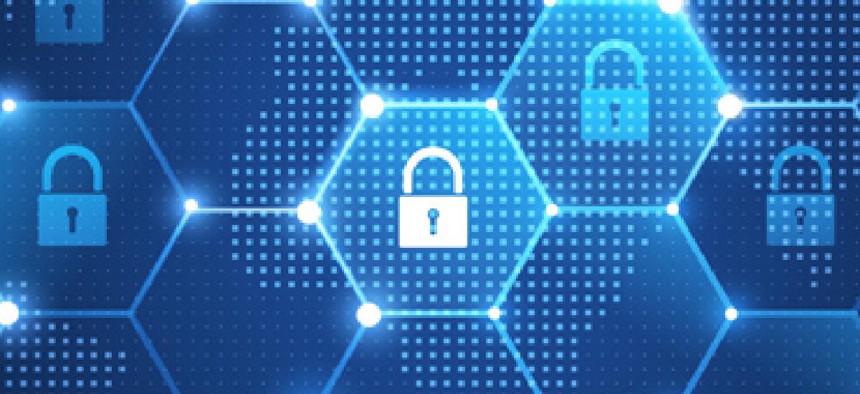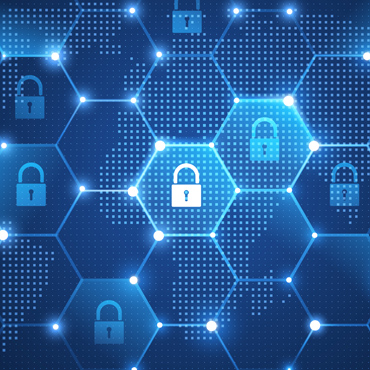Consolidating federal networks could lead to new security holes

Upgrading the federal government's networks is a bipartisan goal among policymakers in Washington, but some worry that a unified architecture presents risks of its own.

For years, one of the chief aims of the IT modernization movement has been replacing the federal government's outdated architecture. Before truly tapping into the transformative power of new software and security tools, the thinking goes, government must first scrap its ancient patchwork networks for a new unified IT infrastructure.
This view cuts across party lines and ideology. In December 2016, a cybersecurity report commissioned by the outgoing Obama administration recommended that the government "establish a program to consolidate all civilian agencies' network connections (as well as those of appropriate government contractors) into a single consolidated network." In August, the Trump administration unveiled its own plan for IT modernization, with network consolidation serving as one of the main drivers for the transformation.
Both administrations framed their unified architecture plans as necessary prerequisites to implementing a comprehensive, modern cybersecurity strategy across federal agencies. However, among security experts both inside and outside government, there is concern that even if a network upgrade is overdue, this approach may wind up creating new vulnerabilities to the government's systems and data.
Tony Sager, senior vice president at the Center for Internet Security, told FCW that there is currently a "great debate" in the information security community about whether a unified IT architecture would ultimately be a net positive or negative when it comes to protecting federal systems. One thing both sides agree on is that the status quo has many flaws.
"We have such challenges with outdated IT that create a lot of security problems in and of themselves," Sager said.
But there are signs that a move to a more consolidated network is causing problems of its own. A survey of federal IT leaders found that a majority felt IT modernization initiatives were exacerbating security challenges, at least in the short term. One of the most frequently vocalized concerns is that a unified network will make it easier for malicious hackers and increase the damage that can be done through a single vulnerability.
Beth Dunphy, program director for cybersecurity at IBM, said that while a consolidated approach would certainly yield efficiencies in design and purchasing, ultimately when it comes to defending a network, "a little complexity goes a long way."
"I think having a common playing field and common standards certainly helps everybody understand what you're trying to keep secure, but at the end of the day, that is all going to make it easier [for cyber intruders] to repeat the attacks," said Dunphy at the AFCEA Homeland Security Conference on Sept. 12. "So if I know agency A and B have implemented the same tools the same way, they're also likely misconfigured the same way, and I can get into both systems the same way."
John Felker, director of the National Cybersecurity and Communications Integration Center, pointed to conclusions drawn after post-2016 investigations into election and voting systems as an example of this principle. One of the reasons federal investigators appear confident that voting machines weren't tampered with or hacked on a widespread basis is the decentralized nature of the county's electoral infrastructure, which is mostly administrated at the state or precinct level.
"By definition [the systems are] different and much more difficult to hack," Felker said.
The counter argument from those advocating for a more consolidated, standardized architecture is that much of the current decentralized network dates back to the 1980s and is incapable of meeting the challenge posed by modern cybersecurity threats from well-funded nation states and coordinated groups of attackers.
Sager, who generally favors network consolidation, said that while it may ultimately create a "shinier target" for malicious hackers, it also creates an opportunity to better build security into the design of the architecture. He said he has become convinced that modernization and consolidation of security is a better play than the decentralized status quo that has led to "unmanaged chaos" at some agencies and across the federal government.
"If you think of [the federal IT architecture] as a large-scale system, you want to bring things together centrally, manage them in a confederated way and make sure you're not being brought down by the weakest partner in your enterprise," said Sager.
While discussing the security implications of cloud adoption at the AFCEA conference, Chris Cummiskey, CEO of Cummiskey Strategic Solutions and former deputy undersecretary for management at the Department of Homeland Security, alluded to this problem.
"It won't make much of a difference if we just do the same thing with cloud computing that we do with data centers: just stove pipes all over the place," he said.
Beyond the security benefits, some proponents of the consolidated approach believe that the data and network silos in the federal government today are products of larger management and business process silos, where technology often takes a back seat to institutional turf battles.
The government has worked to address this problem through a series of moves -- like the creation of a federal chief information security officer and the recent elevation of Cyber Command -- that are in part designed to break down barriers and increase coordination among its various cybersecurity resources.
Mark Forman, global head of public sector at Unisys and former e-government director in the George W. Bush administration, said that IT modernization is about more than upgrading to newer tech. To fully combat modern cyber threats and improve services, agencies must "get rid of the silos, the real constraints on the business" of government.
A consolidated IT architecture, then, could then potentially mark a significant step in the direction of reconfiguring those business processes with technology as one of the main drivers of change. Proponents believe this approach will not only allow for a more centralized and coordinated defense of critical government systems and data, but it could also fundamentally reshape the way the federal government delivers services.
"Modernization is all about a purpose. That purpose relates to the mission of government and is tied to the lives of people who are helped by government," said Dan Chenok, a former senior official at the Office of Management and Budget and director of the Center for the Business of Government at IBM. "The reason you're modernizing is so that you can provide better services to people."
NEXT STORY: Why the New iPhone Is So Important


